Kneading Conference West
“You couldn’t buy flour, white flour, any more without taking four times the quantity of brown flour. Those who could afford it ate bread and biscuits with white flour and made mash for the chickens with the brown.”
East of Eden, John Steinbeck
Inspiration
Bakers of bread, owners of bakeries, farmers of grain and millers of flour gathered in Burlington, Washington at the WSU-Mount Vernon Research Center in September to share all things that make a better bread. Kneading Conference West was a dough filled weekend stuffed with learning and floury experiences in whole grain breads. Workshops, panels and presentations, field trips, networking and bread fresh from the oven are few of the highlights of the conference. Wood-fired bagels for breakfast, challah warm from the oven, tangy sourdough fruity and sweet with raisins and apples and a thrilling heritage wheat puff pastry all were part of the experience.
Four from Kneading Conference West 2013:
Whole Grain Flour: There is a renaissance in growing, milling and craft baking with locally grown wheat. Driving this quest is learning the origin of our food and eating healthy, nutritious whole food that comes from our own communities. At the WSU-Mount Vernon Research Center hundreds of wheat varieties are grown in test plots. At the Research Center these samples and wheat grown in the local community are tested for diversity in taste and baking performance. Growing wheat for taste has not been part of our American wheat heritage. Traditionally American wheat has been grown only for high yields of white flour. This is ground breaking work with far reaching implications. The future of diversity in wheat, barley, oats, spelt, rye and other whole grains is exciting.
Sourdough Starter: Bread made with sourdough starter (or wild yeast levain or “starter”) has a unique flavor, is stronger and has a long shelf-life. The gluten in wheat is easier to digest and nutrients are more easily absorbed from bread made with sourdough starter. With a slow and easy rising time this bread is easier to proof correctly. Making and keeping your own sourdough starter is much easier than I imagined.
Proofing Bread: The finger poke test still reigns when determining when bread is proofed. When poked with a floured covered finger the indentation in the dough will spring back slightly and the bread will be proofed and ready to bake. If the indentation closes back up the dough is not ready to bake. If the indention does not spring back the dough is over-proofed. Proofing bread until it “doubles in size” usually means the bread is over-proofed. When proofing, gently deflate rather than “punch down” your bread dough. Bread made from sourdough starter or dough without much added sweetener may never fully recover from rough handling.
Skagit Valley: The Skagit Valley in Washington state is beautiful. It is situated between Seattle and Vancouver, the San Juan Islands to the west, and North Cascade National Park to the east. It is a place of verdant green, lush from the ample rain of the north-west. A place with an annual tulip festival most certainly has a touch of whimsy in the air.
Essentials
The last day of the conference included a tour of Breadfarm Bakery in Edison, Washington. Breadfarm overflows with gorgeous breads, pastries and cookies baked with locally grown and milled flours. At the bakery I tasted a sample of Sour Cherry Lemon, a sourdough bread that captured my imagination. Memories of the barely sweet and faintly tangy bread lingered and I began recipe testing. My recipe is a variation of the classic Dutch Oven Bread that mimics a commercial bread oven to maintain heat and humidity in the home oven. This bread is so marvelous I’m including recipes for both commercial yeast (store bought) and sourdough starter. We’ve eaten this bread with pasta for dinner, toasted for breakfast with apricot jam and then made tuna sandwiches for lunch. There are no rules about when excellent bread is best eaten.
“Have a relationship with your starter.” is the mantra of Jonathan Bethony, Resident Baker at the WSU Bread Lab. I am still building a relationship with my very own sourdough starter, Benjamin. Waking Benjamin from his cozy sleep in the refrigerator and adjusting to his twelve hour feeding schedule is a new workflow for bread baking that is very different from baking with commercial (or store bought) yeast. I didn’t taste too much of a difference between the two recipes. My sourdough starter, Benjamin is still very young and a more robust sourdough taste will develop over time. Until then I’m going to keep making bread.
| Yeast Recipe | |
| 8oz/2C | bread flour |
| 8oz/2C | all-purpose flour |
| 1/4t | active dry yeast |
| 1-1/2t | fine grain sea salt |
| 2T | olive oil |
| 2T | honey |
| 3oz | beer |
| 7oz | water |
| 1T | lemon juice |
| 2 | lemons, zested |
| 1/2C | dried sweet cherries |
| Sourdough Starter Recipe | |
| 8oz/2C | bread flour |
| 8oz/2C | all-purpose flour |
| 1-1/2t | fine grain sea salt |
| 2T | olive oil |
| 2T | honey |
| 1C | sourdough starter |
| 1C | water |
| 1T | lemon juice |
| 2 | lemons, zested |
| 1/2C | dried sweet cherries |
- If using commercial yeast: In a medium size “non-reactive” bowl mix together: flours, yeast, salt, olive oil, honey, beer, water, lemon juice, lemon zest and cherries. Mix throughly, until there are no lumps. Scrape down the sides of bowl, gathering all the dough into a ball in the center of the bowl. Cover the bowl with plastic wrap and keep in a draft free place for 8-18 hours. Continue with instructions 3-5.
- If using sourdough starter: In a medium size “non-reactive” bowl mix together: flours, salt, olive oil, honey, sourdough starter, water, lemon juice, lemon zest and cherries. Mix throughly, until there are no lumps. Scrape down the sides of bowl, gathering all the dough into a ball in the center of the bowl. Cover the bowl with plastic wrap and keep in a draft free place for 8-18 hours. Continue with instructions 3-5.
- On a floured work surface, gently deflate the dough while forming it into a round shape. Place the dough onto a piece of oiled parchment paper which lines an 8 inch sauté or cake pan. (The parchment paper should be large enough to fit down inside and cover the walls of the Dutch oven. The corners of the parchment paper will used as handles for lifting the proofed dough into the hot Dutch oven.) Spray the top of the dough with oil and lightly cover with plastic wrap. For commercial yeast, allow to rise or proof for approximately 2 hours. For sourdough starter, allow 2-3 hours for proofing. When poked with a floured covered finger the indentation in the dough will spring back slightly and the bread will be proofed and ready to bake. (If the indentation closes back up the dough is not ready to bake. If the indention does not spring back the dough is over-proofed.)
- During the last hour of proofing the dough, heat the oven to 500°. Heat a Dutch oven (with the lid) in the hot oven for at least 30 minutes. When the Dutch oven is hot and the dough is proofed remove the plastic film from the dough and dust the top of the loaf with flour. Make 3 slits across the top of the loaf with a sharp razor blade or lame knife at least 1/2” deep. With great care, place the dough into the hot Dutch oven by using the parchment paper as a sling. Cover the Dutch oven and reduce the temperature to 425°.
- Bake for 25 minutes with the lid on, and then 20 minutes with the lid off. Check the bread after 15 minutes with the lid off. The bread will be a lovely deep tawny brown when it is finished cooking. Using the parchment paper, immediately remove the bread from the Dutch oven to cool on a wire rack. After baking allow the bread to rest at least one hour before slicing.
Kneading Conference West has a new name: The Grain Gathering.
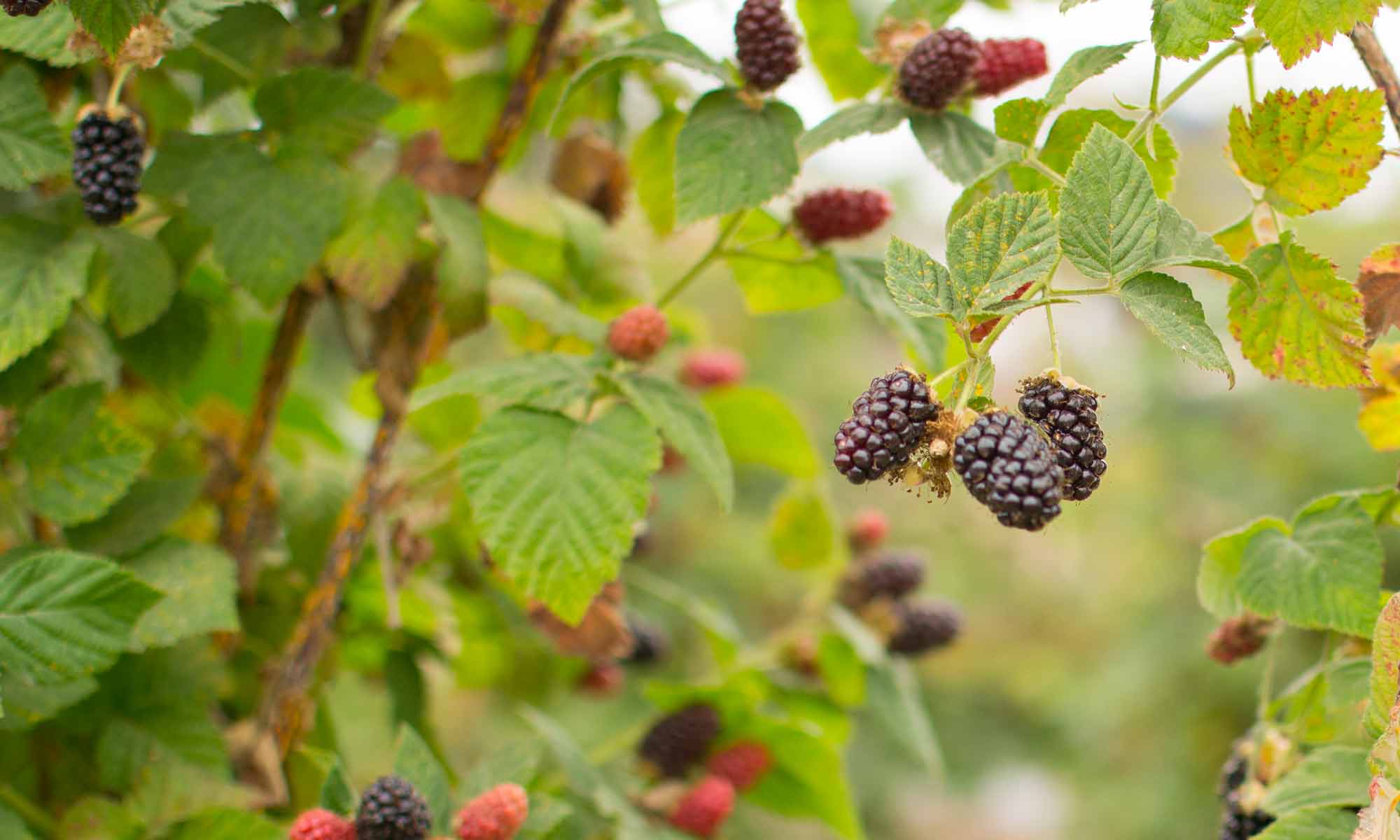
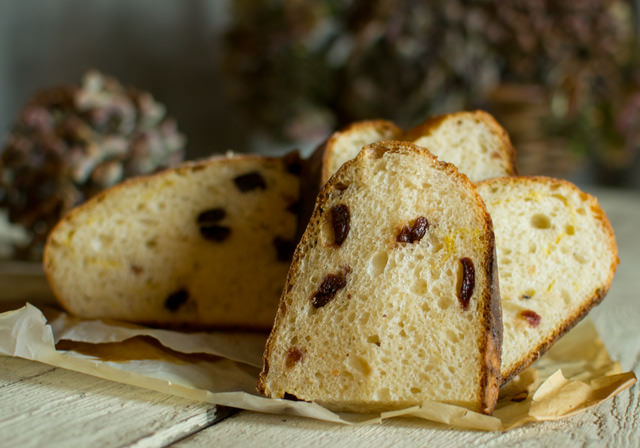
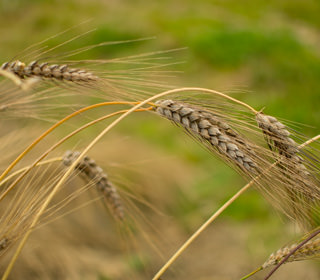
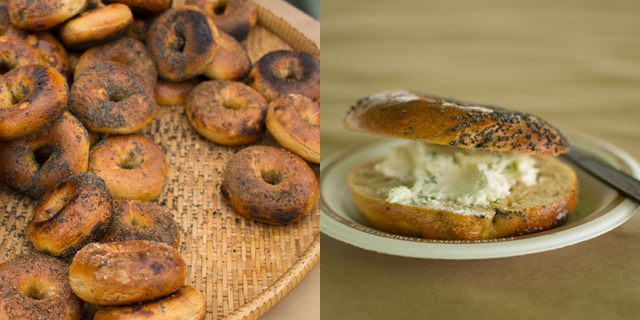
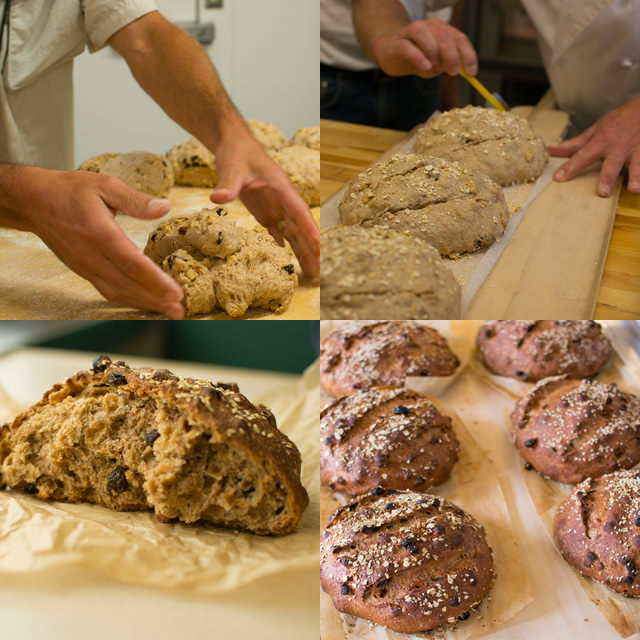
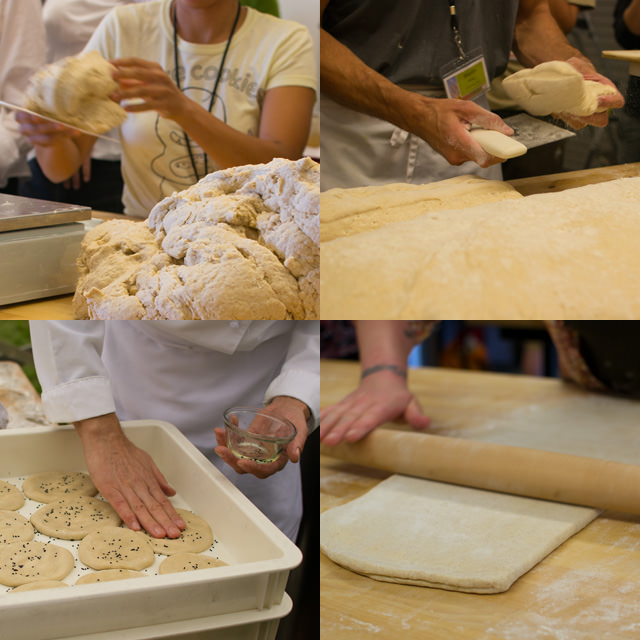
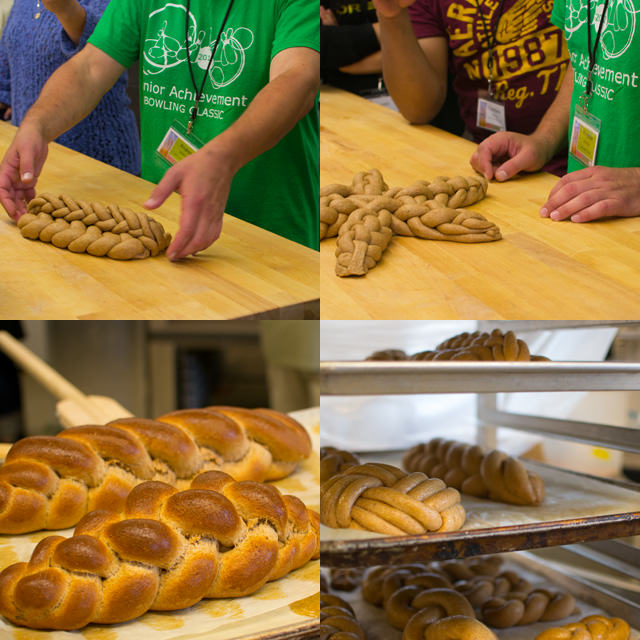

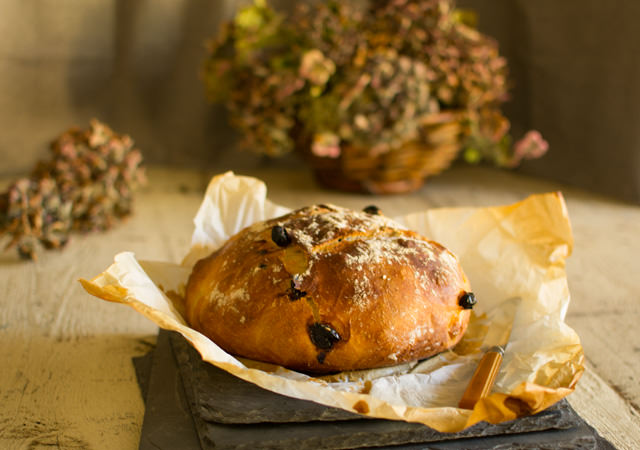
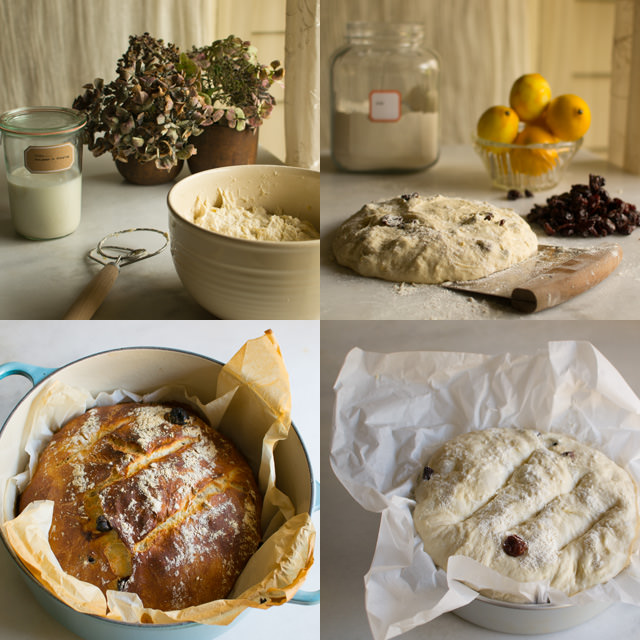
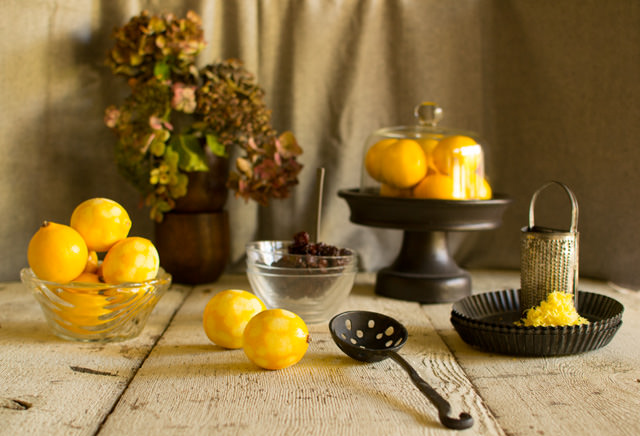
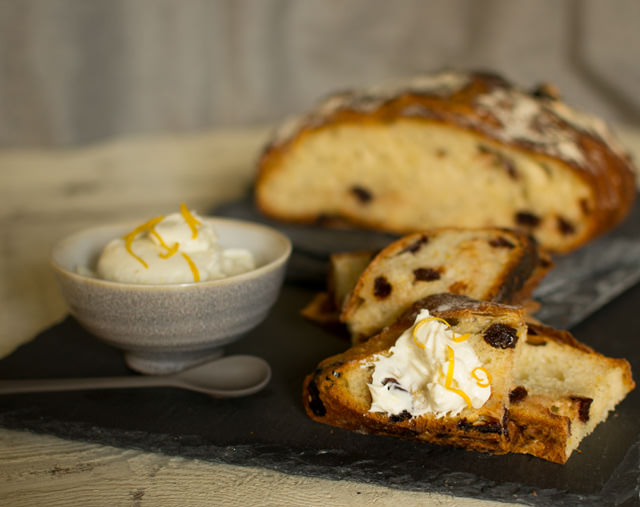
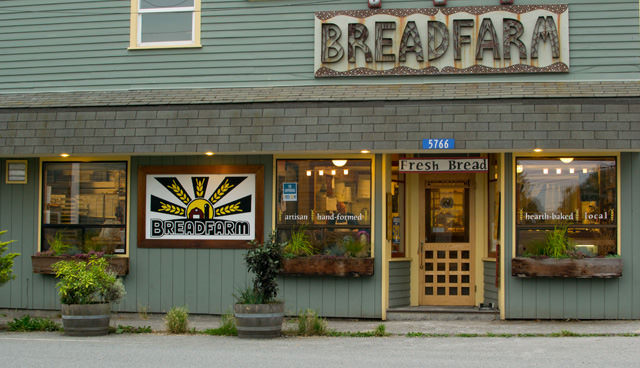
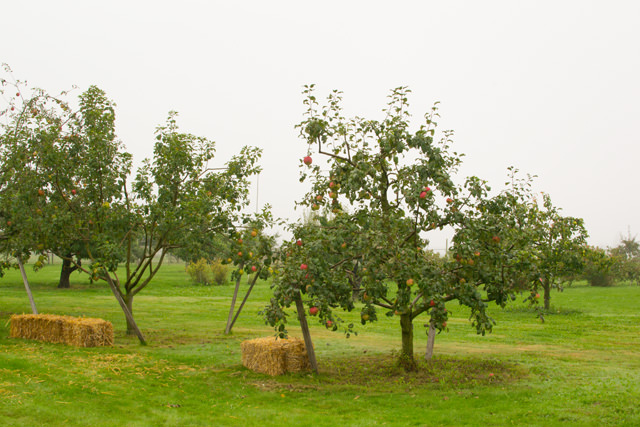
A kneading conference – wow. Now that sounds like an amazing experience! Some of these braided breads are almost too beautiful to eat. Your lemon cherry bread looks just wonderful! Kneading bread is so cozy, homey – I hope you and Benjamin are doing well together. 🙂
Thank you Hannah! Benjamin has been neglected over the holidays and is ready for a feeding! It’s time to make bread!
Deb, first let me say that your photos are just beautiful and the bread even more so. Making bread is such a labor of love, time consuming and therapeutic. I so desperately wanted to attend Knead Conference West this year. It had been on my radar for months but a conflict prevented me from going. Summer before last my husband and I took a trip to the San Juan Islands and on our drive back to the Seattle airport, we made a side trip to the Breadfarm Bakery. I took bags of goodies home with me, each one better than the next. I have missed baking bread. With the slower, calmer days of January just around the corner, maybe I will have the opportunity to put a few loaves into my oven.
Thank you for the delicious comment Mary! If you can attend next year I am sure you would enjoy the conference. The Breadfarm is an amazing find isn’t it!
What a gorgeous bread, Deb! I love cherries – I can only imagine how good they are in this recipe! Amazing photos from the conference. So fun to see how different kinds of breads are made. I especially love the photos of the braided bread loaf in the making. 🙂
Thank you for the tasty comment Julia, much appreciated! The conference was such a joy, I learned so much and had a great time!
Gosh kneading conference?! That would have suited me beautifully. What fun and a grew post recount from it. Love it!
Thank you for the delicious comment Shulie!
Oh I didn’t let you know but I’ll be making this…with Meyers. I might use my preserved meyers. or the frozen ones. And I have dried cherries.
This will be made. This year. Yep, 2013.
It’s such an easy recipe and can be made with store bought yeast with excellent results! Enjoy!
You. Are the best.
Next year, I’ll birth a starter. I’ll call her Chartreuse….and I will build a relationship.
I LOVE this bread. I want it. To make it. To eat, feast, embrace.
#Athingofbeauty….
Oh Oz! Thank you for the most gracious of comments! This is just the inspiration I needed today!
Such a wonderful bread-ful post. The pix are lovely, and those loaves look hearty and delicious.
Thank you for the delicious comment Lynda!
Another item on my list of things I want to cook with you when we someday get a chance – bread! In your free time 🙂 when you can browse through my blog, you’ll see that I have a goal to be a good bread baker like my grandma but still struggle with a bit of dough-a-phobia. But my courage outpaces my phobia, happily!
This is a fascinating post and sounds like a wonderful conference. If you go again – ping me – I might just tag along!
What a lovely lovely sounding bread. Can’t wait to get up the courage to try it!
Thank you for the scrumptious comment Beth! I would love to bake bread with you!
What a great bread recipe, Deb. Sounds like the conference was amazing!
Thank you for the gracious comment Viviane!
Deb, what is there to say but, “Wow!”? Seriously, what an amazing experience. All of those breads are stunning, works of art. And so is your lemon cherry bread…a complete work of art. I can almost feel its perfect texture, and crispy crust…and the flavor and aroma must be heavenly.
Geni thank you so much for the lovely comment! You brightened my day!
Oh my goodness, this sounds gorgeous Deb…who needs cake when you have bread like this? Xx
Thank you Denna! Homemade bread is divine isn’t it!
Look at all of those gorgeous loaves of bread!!! But I have to say that I like your cherry bread the best. Unfortunately, my sourdough starter died or I’d be making this tomorrow. Might have to give a friend a call who I know has some in his fridge. 🙂 Gorgeous bread!
Thank you MJ!
Wow! Perfect timing for this blog. One of my 2013 new years resolutions was to learn to make yeast bread (really!), providing healthier bread to our home. Haven’t started yet (still have 21 days, after all!) but it is weighing heavily on my mind to accomplish! This is just the push I need to get me going. Thanks Deb! Merry Christmas and Happy New Years!
Thank you for the lovely comment Denise! I appreciate your thoughts. Making bread is not difficult! For me the challenge is to incorporate the rhythm of the recipe into my plans for the day. Happy holidays!
What a lovely post! I felt like I’ve entered a bakery. Thanks 🙂 ela
Thank you Ela! Attending the conference was a lot like a mega bakery tour!
what an excellent post, Deb; so exciting! I’ve been trying to learn more and more about how different flours work, and about bread-making in general, and i’m floored by how much information you covered. There’s so much i didn’t know about! nevermind all those absolutely stunning breads above: wow. it’s truly craftsmanship to be able to do things like that. definitely tucking this post away for reference. i tried to make my own starter awhile back, and it was great, but i killed it and never got around to making another one. now i really feel like giving it another go. oh, and NOT killing it this time. 😉
Thank you for the insightful comment Shannon! I learned so much at the conference, it was a great experience!
Gorgeous bread, I love the flavor and that you baked it in a Dutch oven. Now if only this bread would magically appear in my kitchen for breakfast ;).
Thank you Laura! I would very much enjoy sending you a few slices of toast for breakfast!
The conference sounds so interesting. I can only imagine how much you enjoyed it and how informative the visits, lectures, etc. were. This bread looks marvelous. On my list to make soon!
Thank you Carol! The conference was informative as well as tons of fun!
I am a bread lover… and I wish I could learn how to make them all (and eat as well)!!!
Thank you Denise! I know, I know so many fabulous recipes and so little time!
Bread baking is such an interesting and complex process. This bread would make the perfect breakfast!
Thank you Laura! The Lemon Cherry Bread makes excellent toast!
Gorgeous bread. Sounds as if there are some really interesting things happening around you in growing and baking with different grains. I’ve been enjoying experimenting with flour from heritage grains grown near to me.
Thank you for the lovely comment Andrea! Locally grown grains are such an exciting adventure!
I think your lemon cherry bread is a beauty!!! Sounds like a wonderful experience and I enjoyed all your photos-wow, some of those braided breads are works of art! This is a perfect time to bake bread and share for the holidays-thanks for your recipe 😉
ps. stay warm!!
Thank you for the gracious comment Patty, much appreciated! I agree, bread and soup are are the menu these cold evenings!